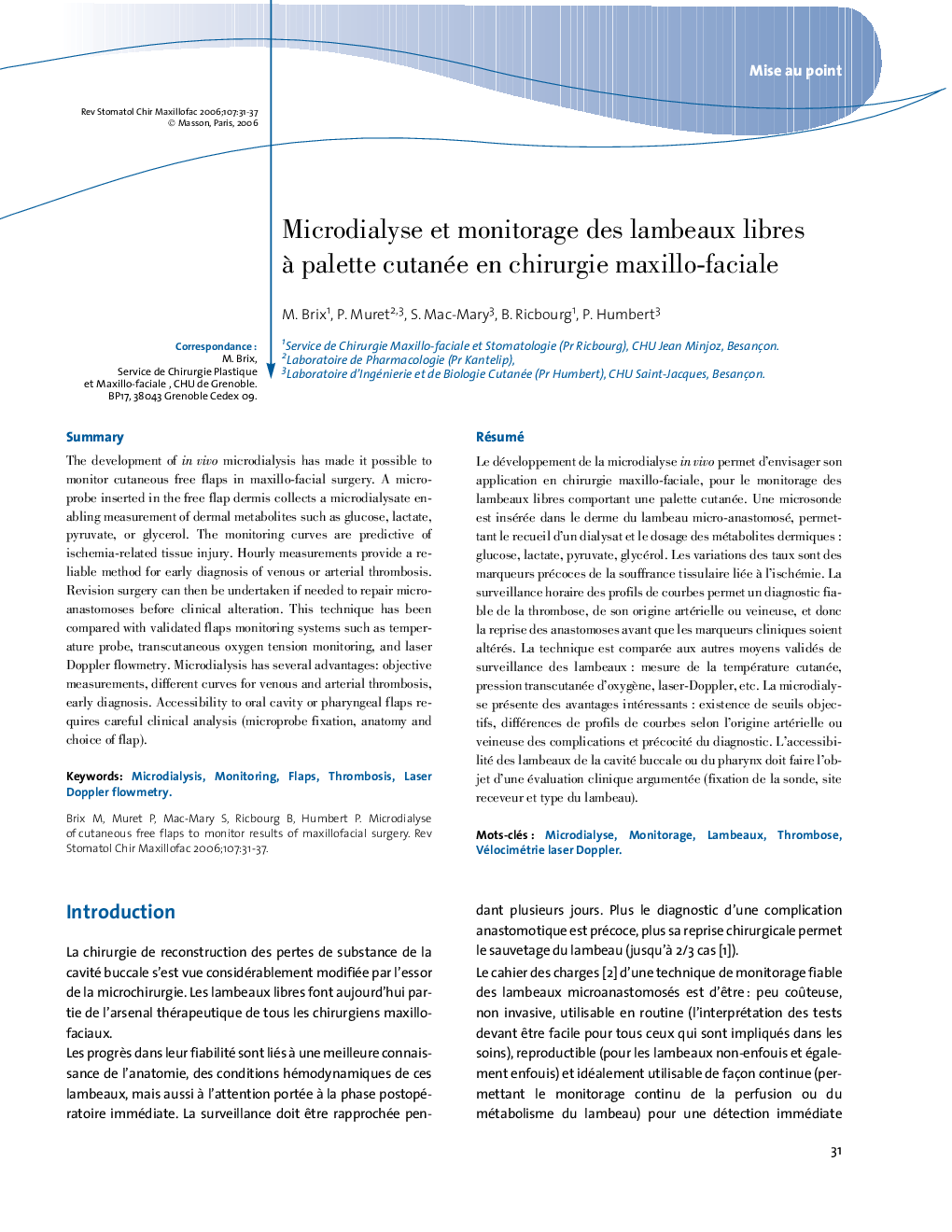| Article ID | Journal | Published Year | Pages | File Type |
|---|---|---|---|---|
| 3174753 | Revue de Stomatologie et de Chirurgie Maxillo-faciale | 2006 | 7 Pages |
Abstract
The development of in vivo microdialysis has made it possible to monitor cutaneous free flaps in maxillo-facial surgery. A microprobe inserted in the free flap dermis collects a microdialysate enabling measurement of dermal metabolites such as glucose, lactate, pyruvate, or glycerol. The monitoring curves are predictive of ischemia-related tissue injury. Hourly measurements provide a reliable method for early diagnosis of venous or arterial thrombosis. Revision surgery can then be undertaken if needed to repair microanastomoses before clinical alteration. This technique has been compared with validated flaps monitoring systems such as temperature probe, transcutaneous oxygen tension monitoring, and laser Doppler flowmetry. Microdialysis has several advantages: objective measurements, different curves for venous and arterial thrombosis, early diagnosis. Accessibility to oral cavity or pharyngeal flaps requires careful clinical analysis (microprobe fixation, anatomy and choice of flap).
Keywords
Related Topics
Health Sciences
Medicine and Dentistry
Dentistry, Oral Surgery and Medicine
Authors
M. Brix, P. Muret, S. Mac-Mary, B. Ricbourg, P. Humbert,
